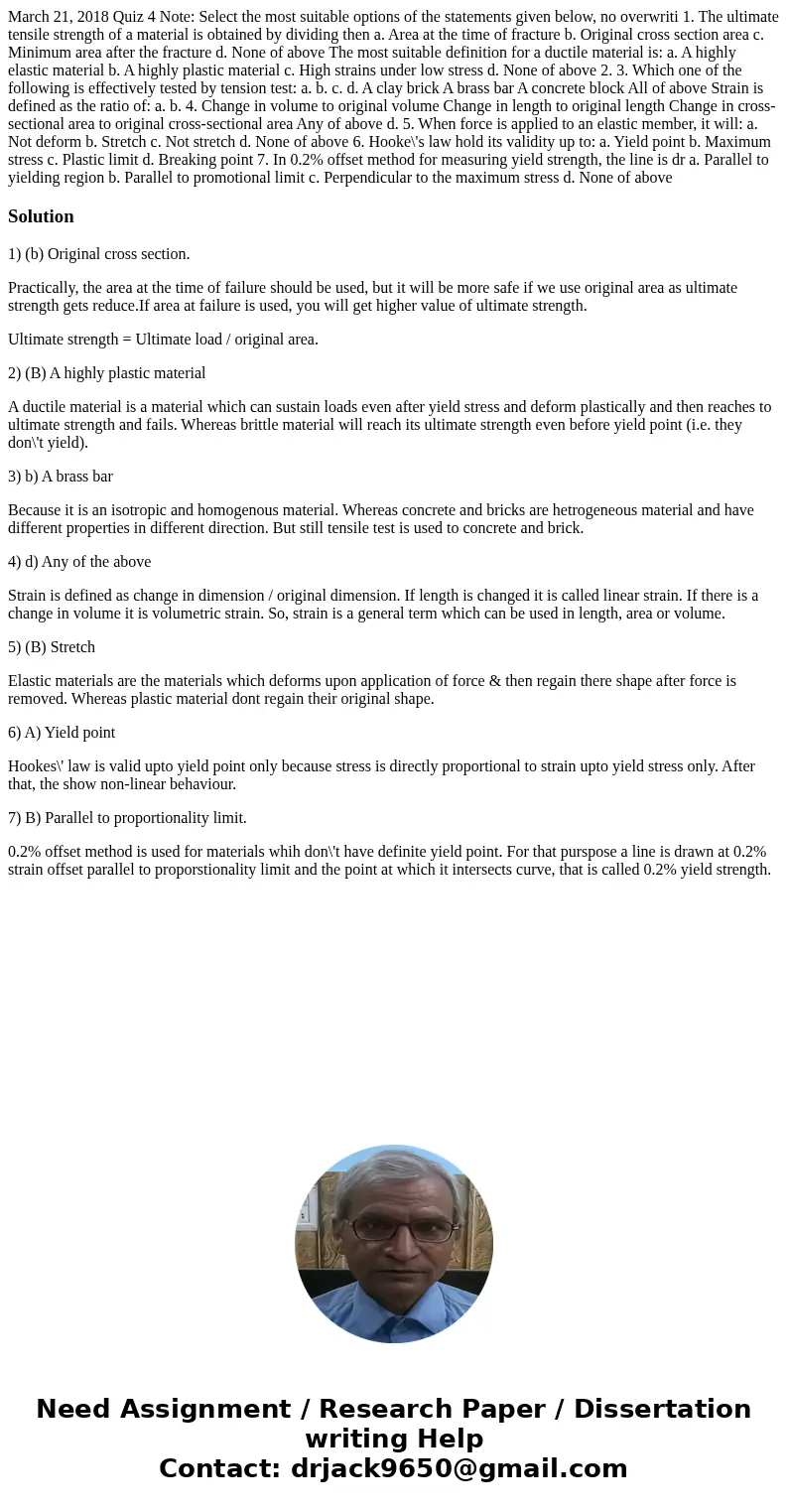March 21 2018 Quiz 4 Note Select the most suitable options o
Solution
1) (b) Original cross section.
Practically, the area at the time of failure should be used, but it will be more safe if we use original area as ultimate strength gets reduce.If area at failure is used, you will get higher value of ultimate strength.
Ultimate strength = Ultimate load / original area.
2) (B) A highly plastic material
A ductile material is a material which can sustain loads even after yield stress and deform plastically and then reaches to ultimate strength and fails. Whereas brittle material will reach its ultimate strength even before yield point (i.e. they don\'t yield).
3) b) A brass bar
Because it is an isotropic and homogenous material. Whereas concrete and bricks are hetrogeneous material and have different properties in different direction. But still tensile test is used to concrete and brick.
4) d) Any of the above
Strain is defined as change in dimension / original dimension. If length is changed it is called linear strain. If there is a change in volume it is volumetric strain. So, strain is a general term which can be used in length, area or volume.
5) (B) Stretch
Elastic materials are the materials which deforms upon application of force & then regain there shape after force is removed. Whereas plastic material dont regain their original shape.
6) A) Yield point
Hookes\' law is valid upto yield point only because stress is directly proportional to strain upto yield stress only. After that, the show non-linear behaviour.
7) B) Parallel to proportionality limit.
0.2% offset method is used for materials whih don\'t have definite yield point. For that purspose a line is drawn at 0.2% strain offset parallel to proporstionality limit and the point at which it intersects curve, that is called 0.2% yield strength.

 Homework Sourse
Homework Sourse